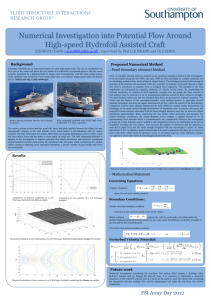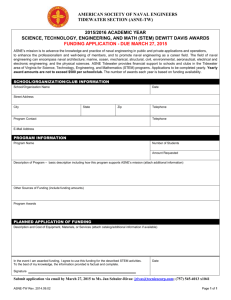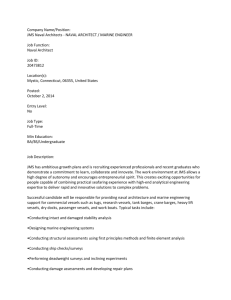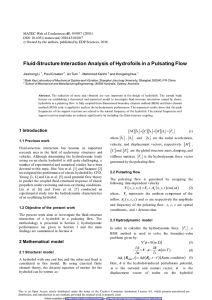John R. Meyer`s Bio
advertisement
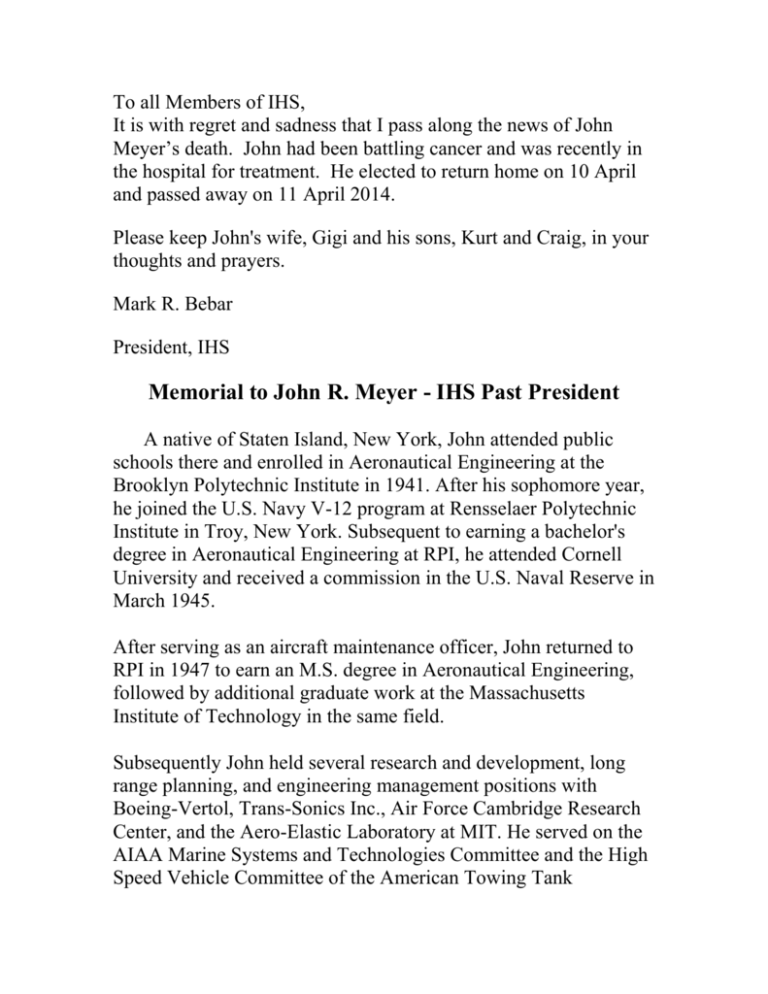
To all Members of IHS, It is with regret and sadness that I pass along the news of John Meyer’s death. John had been battling cancer and was recently in the hospital for treatment. He elected to return home on 10 April and passed away on 11 April 2014. Please keep John's wife, Gigi and his sons, Kurt and Craig, in your thoughts and prayers. Mark R. Bebar President, IHS Memorial to John R. Meyer - IHS Past President A native of Staten Island, New York, John attended public schools there and enrolled in Aeronautical Engineering at the Brooklyn Polytechnic Institute in 1941. After his sophomore year, he joined the U.S. Navy V-12 program at Rensselaer Polytechnic Institute in Troy, New York. Subsequent to earning a bachelor's degree in Aeronautical Engineering at RPI, he attended Cornell University and received a commission in the U.S. Naval Reserve in March 1945. After serving as an aircraft maintenance officer, John returned to RPI in 1947 to earn an M.S. degree in Aeronautical Engineering, followed by additional graduate work at the Massachusetts Institute of Technology in the same field. Subsequently John held several research and development, long range planning, and engineering management positions with Boeing-Vertol, Trans-Sonics Inc., Air Force Cambridge Research Center, and the Aero-Elastic Laboratory at MIT. He served on the AIAA Marine Systems and Technologies Committee and the High Speed Vehicle Committee of the American Towing Tank Conference (ATTC) and was a member of the American Institute of Aeronautics and Astronautics (AIAA) and the Society of Sigma Xi. John joined the David Taylor Model Basin, now known as the Naval Surface Warfare Center – Carderock Division (NSWC-CD) in 1971. He was involved with Advanced Naval Vehicles in the Advanced Concepts Office and was Manager of Hydrofoil Technology in the Hydrofoil Group (Code 115) of the Ship Systems Integration and Programs Departments. He served as the Center’s technical manager of the PHM program, participating in many activities including Contracting Officer’s Technical Representative (COTR) on the Boeing contract, the Automated Surface Ship Information System-Technical (ASSIST), Hydrofoil Collision Avoidance and Tracking System (HYCATS), and various PHM sea trials. He was also project leader for an Innovation Center one-year study of a Semi-Submerged Surface Ship. During his 25 years at NSWCCD, John was closely associated with and a strong advocate for maintenance of the Advanced Ship Data Bank (ASDB), a unique collection of technical data and reports on all types of High Performance Marine Vehicles. John authored numerous NSWCCD reports, as well as AIAA and ASNE papers on hydrofoils and hybrid marine vehicles. He also obtained a number of patents related to this technical area. Hybrid surface ships were under study at NSWCCD by John and his colleagues for about two decades during his employment there. Largely as a result of his sustained efforts over many years, the technology has matured through analytical studies, feasibility designs, computer simulations and model tests. Investigations have been performed on hybrid ships ranging from 160 tons to about 4,000 tons. John also published a series of classified hybrid hydrofoil reports related to pressure signatures, sonar array installations characteristics, a Light Escort design, and multimission versions of the concept. In 1993-1996 a Hydrofoil Small Waterplane Area Ship (HYSWAS) demonstrator, named QUEST, was designed, built, and successfully tested under U.S. Navy/MAPC contract, with John as the COTR. Since retiring from NSWCCD, John has consulted for George G. Sharp, Inc., Advanced Marine Enterprises, Inc., DDL Omni Corp, and Maritime Applied Physics Corp (MAPC). In his 21 years as President of IHS, John was truly the force behind the societies growth and success. He ran a tight ship and ensured that we fulfilled the legal requirements of an organization of this type. With the help of those on the Board and other members, he managed all aspects of IHS business, organizing and efficiently running regular Board meetings and special meetings as required. He was an outstanding leader, with the ability to delegate specific tasks to those individuals best suited for the work that is necessary. Under his leadership, IHS forged strong relationships with other professional societies, including the American Society of Naval Engineers (ASNE) and the Society of Naval Architects and Marine Engineers (SNAME). John also consistently recognized others in the high performance marine vehicle community for their contributions to the advancement of the technology. As HIS’s Newsletter Editor and major contributor, John was the voice of the Society in leading the increasing awareness of hydrofoil developments around the world. Through his many professional contacts, he gathered information on everything from hydrofoil sailboards to large hydrofoil assisted catamaran ferries. He was a driving force behind the IHS website and pushed for development and continuous improvement of the bulletin board, which provides a mechanism for real-time communication among IHS members. As a result of his strong desire to preserve the legacy of hydrofoil technology development, John encouraged the establishment of a permanent exhibit at the National Museum of the U.S. Navy at the Washington Navy Yard. Clearly, development of hydrofoil, hybrid hydrofoil and advanced naval vehicle technology have benefited greatly from John Meyer’s unmatched technical expertise, tremendous energy, and dedication to the U.S. Navy and the Nation. He will be greatly missed. Let us all in the IHS recognize John’s legacy and offer prayer and support to his wife Gigi and sons Kurt and Craig. JOHN R. MEYER, JR. A native of Staten Island, New York, Mr. Meyer attended public schools there and enrolled in Aeronautical Engineering at the Brooklyn Polytechnic Institute in 1941. After his sophomore year, he joined the U.S. Navy V-12 program at Rensselaer Polytechnic Institute in Troy, New York. Subsequent to earning a Bachelor's degree in Aeronautical Engineering there, he attended Cornell University to receive a Commission in the U.S. Naval Reserve in March 1945. After serving as an aircraft maintenance officer, Mr. Meyer returned to Rensselaer to receive a Masters degree in Aeronautical Engineering, followed by additional graduate work at the Massachusetts Institute of Technology in the same field. He has held several research and development, long range planning, and engineering management positions with Boeing-Vertol, Trans-Sonics Inc., Air Force Cambridge Research Center, and the Aero-Elastic Laboratory at M.l.T. Mr. Meyer has served on the AIAA Marine Systems and Technologies Committee and the High Speed Vehicle Committee of the American Towing Tank Conference. He is a member of the American Society of Naval Engineers, American Institute of Aeronautics and Astronautics, the Society of Sigma Xi, and has served as President of the International Hydrofoil Society for many years. In 1971 Mr. Meyer joined the David Taylor Research Center where he has been associated with Advanced Naval Vehicles in the Advanced Concepts Office and as Manager of Hydrofoil Technology in the Hydrofoil Group of the Ship Systems Integration Department. Mr. Meyer has authored a number of DTRC reports, AIAA and ASNE papers on the subject of hydrofoils and hybrid marine vehicles. He also holds several patents in this technical area. He retired in 1996 and has pursued a career in High Perfoprmance Marine Vehicle consulting.
